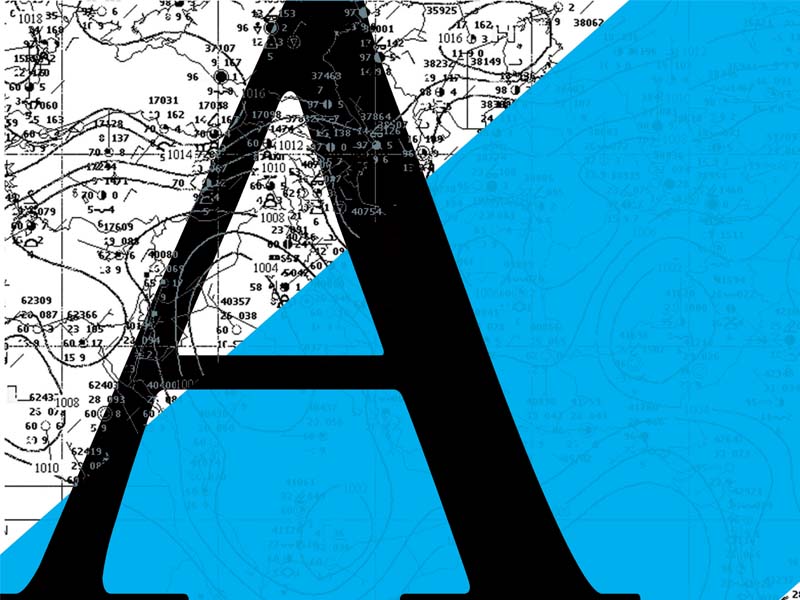
Dealing with disasters
A natural disaster is a major adverse event resulting from a natural process of the earth. Such disasters include floods, volcanic eruptions, earthquakes and tsunami. According to the federal flood commission, there have been 22 major floods in Pakistan between 1950 and 2014. These floods have affected more than 600,000 square kilometres of land and left an estimated 12,000 people dead. Pakistan suffered losses of roughly $16 billion after the 2010 floods.
In Sindh’s Thar district, meanwhile, it is not water that causes natural disasters, but the lack thereof. Every 10 years, the district faces a crippling drought and last year, an estimated 124 died due to water scarcity here. Additionally, one of the worst natural calamities Pakistan has had to cope with occurred in 2005, when 85,000 were killed and one million were left homeless after an earthquake hit the northern region of the country.
In such disasters, the role of the Pakistan Meteorological Department (PMD) is crucial. Both a scientific and services department, the PMD functions under the Cabinet Secretariat, Aviation Division and is responsible for providing meteorological services throughout Pakistan for numerous public activities and projects which require weather information.
The PMD has a network of observation stations and a telecommunication system for the speedy dissemination of data to meteorological offices to analyse data for issuing forecasts and warnings. At the time of its establishment in 1947, the PMD inherited only 15 meteorological observatories from the Central Meteorological Organisation operating in the subcontinent. Today, Pakistan has around 100 Met stations which collect data on an hourly basis. The data looks at wind direction and speed, maximum temperatures, humidity, solar radiation, pressure, visibility, clouds and wind. This information is then sent to regional centres which analyse this data and send it to the national meteorological climate centre. The centre later forwards the data to the national forecasting centre, where it is analysed.
All systems in place
The PMD issues three types of weather forecasts: short-range forecast for 24 hours that is 90% accurate, medium range forecast for five to seven days that is more than 80% accurate and long-range forecast for one to three months that is 70% accurate.
A national monitoring system for droughts and other environmental factors has been set up in Islamabad, while regional centres exist in Peshawar, Quetta, Lahore and Karachi. “There are four kinds of droughts: meteorological, agricultural, hydrological and socio-economic,” explains chief meteorologist Hazrat Mir. “Pakistan faces frequent droughts in Thar, which create serious health problems, shortage of food and water in the area coupled with cold waves, which aggravate the situation in the winter.” There are 50 Additional Warning Stations (AWS) in Sindh and Balochistan, and 100 more AWS have been proposed.

The Pakistan Meteorological Department in Islamabad is responsible for providing meteorological services throughout Pakistan.
The PMD issues a forecast twice daily through INMARSAT Coastal Station in Perth, Australia, for ships at sea. The Maritime Distress & Safety System issues warnings when any port is threatened and bulletins are issued for the fisheries via radio broadcasts. Pakistan is a coordinator of AREA IX — including Bahrain, Djibouti, Egypt, Ethiopia, Iran, Iraq, Jordan, Oman, Pakistan, Qatar and Saudi Arabia — since 1976 and issues coastal warnings to all ships and national authorities within the area.
How forecasts are made
The PMD has more than 100 surface observatories across Pakistan and equipment to measure air temperature, rainfall, pressure, wind direction, humidity, sunshine duration and soil moisture. Different kinds of thermometers and Stevenson Screens are used to measure temperatures and rain. Ameno meters measure wind speed and wind vanes analyse wind direction. Sunshine recorders and evaporation tanks look at humidity and soil moisture while barometers measure air pressure.
Radio Sonde is used through balloon flights to measure wind speed, direction, humidity and temperatures at different levels in the atmosphere. “To assess the moisture content in clouds and the intensity of the weather system at higher altitudes, there is a network of radar systems covering the country,” explains Mir. “These radars include Quantitative Precipitation Measurement (QPM) and state-of-the-art Dopplar Radars.”
The PMD uses different types of Numerical Weather Prediction (NWP) models and regional models to gather data. The data is then transmitted to the National Meteorological Communication Centre (NMCC), Karachi, which is the PMD’s data bank. As soon as the data is received at NMCC Karachi, it is converted into World Meteorological Organisation (WMO) standards. The information is then provided to forecasting centres at different stations including Karachi, Lahore and Islamabad and at 17 airports. This data is arranged in codes defined by WMO and also shared with WMO. Forecasters also use satellite imageries, radar pictures and model prediction in the generation of forecasts. Data is plotted on surface charts after every three hours, while upper air charts and constant pressure charts of different atmospheric level are plotted every 12 hours.
Despite the rigorous monitoring, nature’s fury often comes without warning. And destruction and devastation cannot always be prevented even when the disaster is pre-empted. But more often than not, monitoring and evaluation of weather changes can help save many lives. It is up to the Pakistan Meteorological Department to know which way the wind blows.
Shahzad Anwar is an Islamabad-based reporter for The Express Tribune.
Published in The Express Tribune, Sunday Magazine, May 17th, 2015.












1726123200-0/Untitled-design-(13)1726123200-0-270x192.webp)

1736150117-0/Untitled-design-(1)1736150117-0-270x192.webp)








COMMENTS (1)
Comments are moderated and generally will be posted if they are on-topic and not abusive.
For more information, please see our Comments FAQ